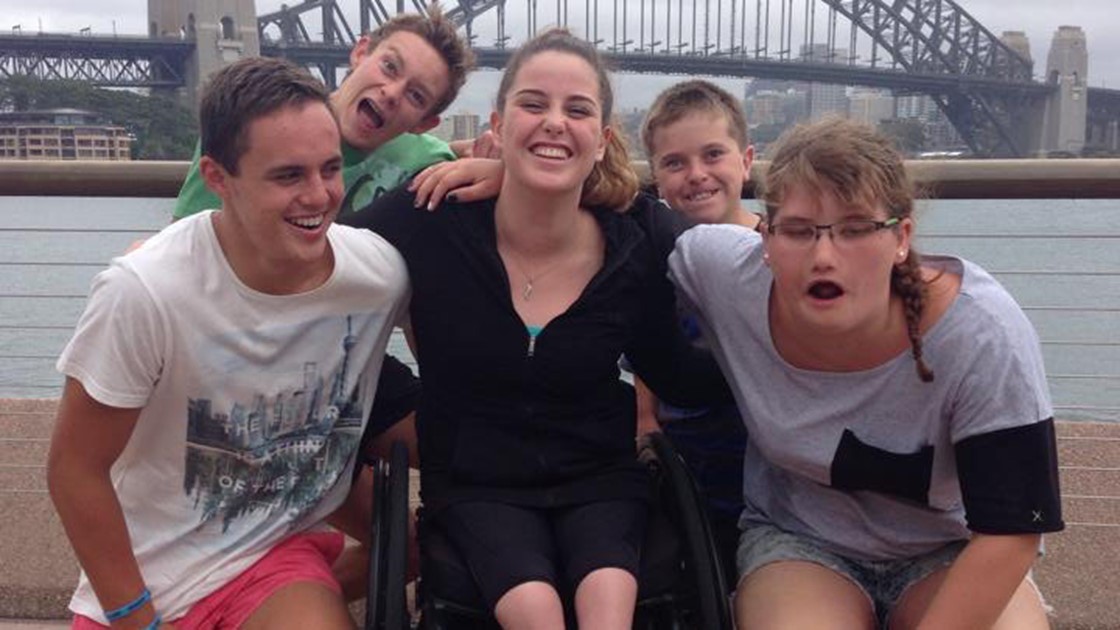For at least 10 years of my life, my day would always start the same way. Getting up before the sun and hauling my un-caffeinated butt to the pool for my morning swim session. I never considered myself a morning person and those early mornings never got easier they simply became routine.
Doesn’t sound like the most inspirational start to a blog about life as a Paralympian does it? Well for me that was my reality day in and day out for as long as I can remember. The competitions, travel and medals were 1% of my journey, the other 99% you’ll hear about in these blogs.
Recently I decided to retire from swimming, not because I was sick of repeating those early mornings every day (even though my boyfriend might have been), but because the reality for me was that my body was no longer capable of handling the high-intensity training I needed to do to stay at the top of my game.
See it’s tough being a high-performance athlete, you push your body to the limit every day to strive for an unattainable idea of perfection, and for me, it was even harder as I had to factor in my disability to how far I was able to push myself too.
My disability basically renders my legs useless. I’ve always used a wheelchair to get around and for a little while I tried using crutches too (worst idea ever, but more on that later). My arms do everything and growing up I didn’t always understand what that meant until I started having issues with my shoulders and elbows.
For the first six or seven years of my career as a swimmer I abused the crap out of my upper body, I was swimming nine times a week, gymming three times a week, and doing two or three boxing classes a week. On top of that I was pushing myself around in my wheelchair all day at school and university, and using my crutches to climb the 50 odd stairs up and down to the pool twice a day.
"See it’s tough being a high-performance athlete, you push your body to the limit every day to strive for an unattainable idea of perfection, and for me, it was even harder as I had to factor in my disability to how far I was able to push myself too."
So, I was surprised in 2013 to learn I had broken bits of bone off my elbow joints and that they were just floating around in there, but looking back on it I shouldn’t have been. I almost thought my swimming career was over then, I was lucky to cross paths with a brilliant surgeon who had a knack for fixing elbows, he reassured me he could surgically remove the bits of floating bone and get me back into the pool.
After both surgeries, I was back in the pool within a month but the return to full training and competition took around six months to achieve. Before long I put my elbow struggles behind me and carried on almost as nothing had happened.
While the body abuse was slightly less, (I was banned from boxing after that) the expectation to keep myself in tip-top shape and ready to race was almost overwhelming. See just because I have a disability doesn’t mean I do nothing and then show up for a participation medal (like some people seem to think). We had to work hard, so hard the type of training we did sometimes made me throw up halfway through a set.
By the time we got to Rio in 2016, I was in the best shape of my life, and I think that’s reflected in the bronze medal I won and personal best times I swam. While a bronze was awesome I still had fantasies of sitting atop the podium with a shiny gold medal around my neck, proudly watching the New Zealand flag rise up above the other countries and bawling my eyes out while I tried to choke out the National anthem. I had it all planned out.
So I set my eyes on Tokyo 2020, I took a nice long break after Rio and began training again in December 2016. Everything was different after Rio, my long break meant I came back lacking the fitness and strength I was so accustomed to having, yet I was still being pushed to train like I never lost it. Sure enough, I started having issues with my shoulders, after eight months of constant complaining to my coach and support team about it, we finally decided to implement a rather drastic rehab protocol to bring me right in time to qualify for Tokyo.

Then a short three months later I went to pick a drink bottle up off the ground and felt a familiar sharp pain in my elbow that hadn’t haunted me since before my 2013 surgeries. It didn’t make sense to me, I was training hard at all. Why was this happening now?
After eight weeks of trying to calm things down with rest and medication I was sent back to Stu Walsh’s office and presented with the idea of another surgery. He told me he believed he could give me an elbow good enough to make it to Tokyo.
I said yes and less than two weeks later he was drilling holes in my elbow and sending me on my zonked out but merry way home. The recovery this time was painful, I wasn’t allowed to swim for three months and repeated the exact same gym rehab programme three times a week, every week for six months.
Then a short three months later I went to pick a drink bottle up off the ground and felt a familiar sharp pain in my elbow that hadn’t haunted me since before my 2013 surgeries. It didn’t make sense to me, I was training hard at all. Why was this happening now?
After eight weeks of trying to calm things down with rest and medication I was sent back to Stu Walsh’s office and presented with the idea of another surgery. He told me he believed he could give me an elbow good enough to make it to Tokyo.
I said yes and less than two weeks later he was drilling holes in my elbow and sending me on my zonked out but merry way home. The recovery this time was painful, I wasn’t allowed to swim for three months and repeated the exact same gym rehab programme three times a week, every week for six months.
"If I had any advice to give to my younger self of even young athletes with big dreams like me, learn to look after your body, put your wellbeing above all else, and while you should be prepared to work beyond your comfort zone, learn your limits and speak up when something doesn’t feel right."
For a while things were good, I was making progress and was on track to meet my goals, but let’s face it I wouldn’t be writing this if things kept going well.
At the end of last year, I started getting the painful symptoms back that I was having before the surgery. An MRI confirmed there was inflammation but no damage to the joint. My surgeon summarised it well by telling me it was likely my elbow just wouldn’t be able to cope with the demands of being a high-performance athlete and it was time to re-evaluate my priorities and figure out what I wanted to do moving forward.
I was quick to establish I couldn’t train through the pain, so I began having discussions with my team about my options. They didn’t want me to consider retiring straight away and helped me work out a plan Z, to give me a few more months to make a decision. I’m grateful for those wonderful people, they fought for me like no one had before and always put my interests at the forefront of everything they did.
If I had any advice to give to my younger self of even young athletes with big dreams like me, learn to look after your body, put your wellbeing above all else, and while you should be prepared to work beyond your comfort zone, learn your limits and speak up when something doesn’t feel right.




